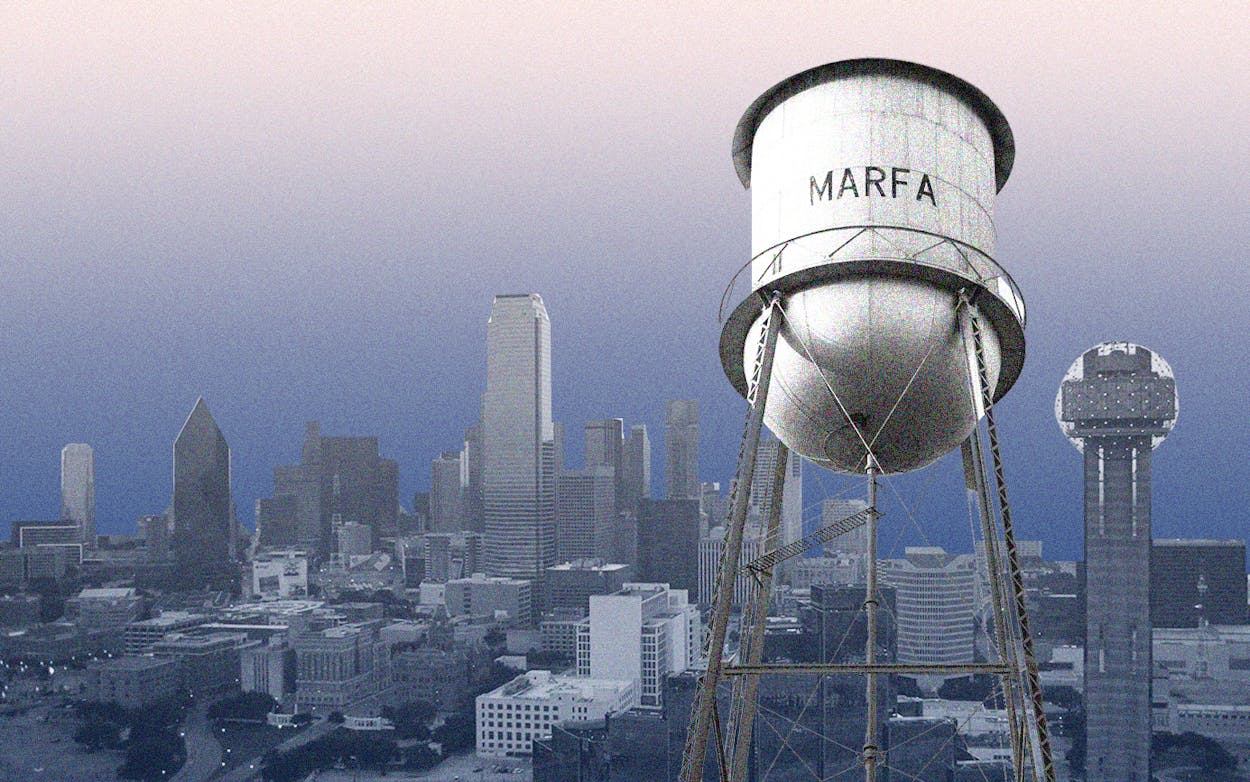Texas is big. It’s bigger than France or Spain. It’s as big as much of the Mid-Atlantic and Midwest. Houston alone is roughly the size of the island of Oahu. Considering the media’s favorite cliche about our state (“everything’s bigger…”), this size would seem to be well-known. Yet when people—even reporters, whose jobs are to verify and convey facts—attempt to explain Texas, the vastness of the landscape somehow escapes them.
This happened again today. The Poynter Institute, a venerable journalism school and research organization in St. Petersburg, Florida, reported on the growth taking place in public radio newsrooms. It’s a positive development for the industry, and Texas is at the heart of it. If you’d like to learn about that, go ahead and read reporter Rick Edmonds’s piece about what’s happening. Just don’t read it to gain any understanding of Texas geography.
Uhm….@Poynter, that’s not how Texas works 🙃 pic.twitter.com/lUrWj6blb8
— Carlos E. Morales (@celizario) November 4, 2019
Describing Marfa as a Dallas suburb is ridiculous, of course. The two cities are more than five hundred miles apart. That’s like describing Cleveland as a suburb of Manhattan. (Plus, everybody knows that Marfa is really a suburb of Brooklyn.) But it’s also the sort of easy-to-make brain fart that happens sometimes, as much as reporters try to avoid those.
The story was updated with a correction after it ran, explaining that “KERA is based in Dallas, not Marfa, Texas,” which offers a clue as to what happened. The reporting was based, in part, on a September press release that discussed how public radio reporters from Marfa and Dallas were dispatched to El Paso after the August Walmart shooting. The Poynter writer probably assumed geographic proximity between the two. It’s not ideal, but it happens, and that’s what corrections are for.
The story has also been updated—this time without a correction—to remove a second mistake.
And @Poynter, El Paso is about as adjacent to the RGV as East Texas is. Meaning, not at all. pic.twitter.com/L2BSFjHcMh
— T.L. Langford (@tlangford) November 4, 2019
El Paso and the Rio Grande Valley are both on the border, but they’re not “adjacent” in any other sense. They’re about seven hundred miles apart. That’d be like describing Washington, D.C., and Jacksonville, Florida, as adjacent because they’re both near the ocean. El Paso is forty miles closer to San Diego than it is to McAllen.
In states that are more reasonably sized—Florida, for example, the Poynter Institute’s home—making these sorts of assumptions is perhaps understandable. You could fit four Floridas into Texas, though, which is a fact that people who haven’t spent years of their life contending with our state’s gargantuan size don’t easily grasp. Even in a big state like California, describing San Diego and the border town Calexico to its east as “adjacent” might not be strictly accurate, but it’s not egregiously off-base. The two are separated by less than 120 miles, about the same distance as between Rio Grande City and South Padre Island, both of which are nominally in the Rio Grande Valley region, and which could reasonably be lumped together.
There are five corrections noted on Poynter’s piece, aside from the unmentioned removal of “adjacent.” Most of the mistakes rooted in Texas geography could have been corrected by a quick consultation of Google Maps. (That’s how we learned the distance between Cleveland and New York City.) But the sheer enormity of Texas is hard for people to grasp, unless and until they’ve attempted to drive across it. When mistakes like these occur, they’re good for a knowing chuckle at those apparently incapable of fathoming the totality of Texas.
- More About:
- Rio Grande Valley
- Marfa
- El Paso







